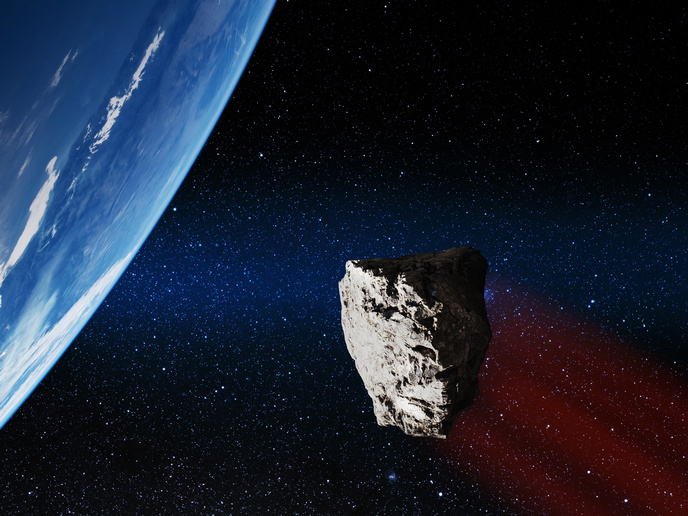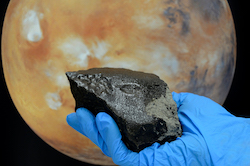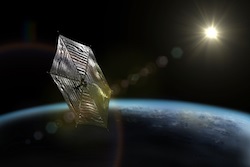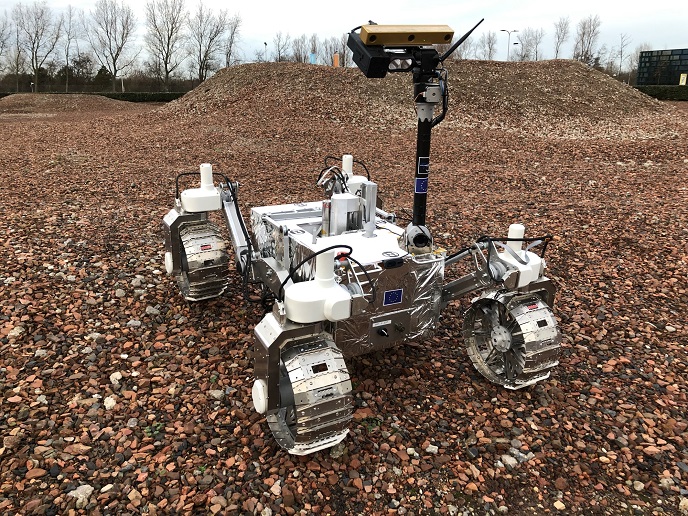Boosting planetary and spacecraft defence against asteroids
Asteroid-based missions – whether for planetary defence, science or mining operations – require advancements in numerical models, payload development, data processing techniques and operational capabilities. Bringing together researchers from academia and industry, the EU-funded NEO-MAPP(opens in new window) project made considerable progress in these areas. “We significantly enhanced numerical models describing the dynamics of near-Earth objects (NEOs) and their reaction to external forces, especially kinetic impacts for deflection,” notes project coordinator Patrick Michel. “From previous missions, we learned that asteroids behave in unexpected ways in their low-gravity environment owing to their small mass. Therefore, we needed to adapt our models to accurately simulate NEO responses to various processes and interactions.”
Groundbreaking advances in asteroid impact modelling
NEO-MAPP’s advanced modelling capabilities have led to significant breakthroughs in understanding the impact processes and the physical state of NEOs, including binaries. These new strategies can be applied broadly – from impact cratering on the planetary surface to shielding spaceships against micrometeorite impacts. “We have developed a new approach to model the entire impact process on weakly structured asteroids,” states Michel. “This came after the surprising discovery that some asteroids, despite having many boulders, behaved as if they were made of a cohesionless medium while interacting with JAXA Hayabusa2(opens in new window) and NASA’s OSIRIS-REx(opens in new window) sampling tools.” Previous numerical models struggled to simulate impacts on such surfaces. However, NEO-MAPP’s new method, validated by comparison with the outcome of the Hayabusa2 impact experiment on asteroid Ryugu, has proven successful. This approach was then used to predict the outcome of NASA’s DART(opens in new window) mission impact on Dimorphos, the moonlet of binary asteroid Didymos. “Our simulations appear to be consistent with ground-based observations, suggesting that Dimorphos reshaped after impact – a finding that we hope to confirm with the upcoming Hera(opens in new window) mission,” adds Michel.
Boosting the readiness level of payloads and simulators
Another project activity has been dedicated to advancing the maturity of several European instruments, both spaceborne and landed, that play a crucial role in planetary defence. These instruments included laser altimeter PALT, gravimeter GRASS, and the Radio Science Experiment and Inter-Satellite Link onboard the Hera mission. Beyond the Hera mission, significant progress has been made in developing a seismometer and a high-frequency radar system. By improving these instruments, the team focused on measuring the NEO surfaces, shallow sub-surfaces and interior properties – geological properties that significantly influence an asteroid response to external actions. The team has also developed algorithms and simulators for close-proximity operations and payload data analyses. “When a spacecraft touches down on an asteroid, all our data analysis tools need to run. Our mission is to squeeze every bit of information we can from the various instruments onboard and maximise their potential by combining their data,” underscores Michel. “For example, we use both images and laser data to get the most accurate shape of the asteroid.” NEO-MAPP has also been instrumental in developing robust guidance, navigation, and control strategies for landing on bodies in low-gravity environments. Measuring the response of the surface (e.g. with accelerometers) through direct interactions with compact spacecraft such as CubeSats or micro-landers is key to determining the strength and softness of an asteroid. “With Hera set to launch in October 2024, there is potential for a rendezvous mission with Apophis in 2029, like the RAMSES(opens in new window) mission under study at the European Research Agency. Funding such a mission would add value to NEO-MAPP as we aim to detail the mission scenario, validate encounter simulations and develop innovative payload and data processing techniques,” concludes Michel.







